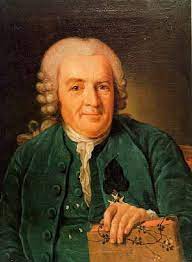nehagoyal022@gmail.com | Posted on | Education
Who is known as father of taxonomy?
Student | Posted on
The title "Father of Taxonomy" is attributed to Carl Linnaeus, an 18th-century Swedish botanist, zoologist, and physician. Linnaeus revolutionized the classification of living organisms by introducing a standardized system of nomenclature that is still widely used today. Born on May 23, 1707, Linnaeus laid the foundation for modern taxonomy, the science of naming, defining, and classifying organisms.
Linnaeus's most influential work is "Systema Naturae," first published in 1735, which he continuously expanded in subsequent editions. In this monumental work, he classified and organized the vast diversity of plant and animal life into a hierarchical structure. He introduced the binomial nomenclature system, where each species is given a two-part Latinized name, consisting of the genus and species. This system brought order to the chaotic and inconsistent naming conventions that existed at the time.
The enduring impact of Linnaeus's contributions to taxonomy extends beyond the realm of biology. His systematic approach influenced various scientific disciplines, fostering a standardized and universal language for the classification of life.

Also Read- Who is the Father of the Internet?
0
0 Comment
| Posted on
The father of taxonomy is Carl Linnaeus, a Swedish botanist, doctor, and zoologist. Linnaeus is prestigious for his pivotal work in fostering a various leveled framework for characterizing and naming creatures, known as binomial classification.
Brought into the world on May 23, 1707, in Råshult, Sweden, Linnaeus showed an early interest in plants and nature. He concentrated on medication at the College of Lund and later sought after his enthusiasm for plant science at the College of Uppsala. It was during his time at Uppsala that Linnaeus fostered his arrangement of order and started to establish the groundwork for current scientific classification.
At that point, there was no normalized framework for naming and sorting organic entities, bringing about disarray and irregularities. Linnaeus looked to make a widespread framework that would give an unmistakable and coordinated method for grouping every single living thing. His work planned to carry request to the normal world and work with logical correspondence.
In 1735, Linnaeus distributed his most huge work, "Systema Naturae," which presented the binomial classification framework. This framework relegates every species a one of a kind two-section name comprising of its variety and species. For instance, people are known as Homo sapiens, with Homo addressing the family and sapiens addressing the species.
Linnaeus' binomial classification reformed scientific categorization by giving a normalized and widespread method for distinguishing and group creatures. It permitted researchers from various locales and disciplines to impart really and precisely depict species.
As well as fostering the binomial terminology framework, Linnaeus likewise settled a progressive characterization framework. He coordinated creatures into a settled order in light of their common qualities. The order begins with the broadest class, the realm, and advances through phylum, class, request, family, variety, and species.
Linnaeus' order framework is still broadly utilized today and structures the premise of current scientific classification. It gives an orderly and coherent structure for coordinating and concentrating on the variety of life on The planet.
Notwithstanding his commitments to scientific categorization, Linnaeus made huge progressions in different areas of science. He directed broad natural examination and gathered a huge number of plant examples, a considerable lot of which were beforehand obscure to science. Linnaeus likewise fostered a framework for distinguishing and classifying plants in light of their conceptive designs, known as the sexual framework.
Besides, Linnaeus' work stretched out past plants to incorporate creatures. He arranged and portrayed various creature species, including bugs, vertebrates, birds, and fish. His exhaustive way to deal with scientific categorization incorporated the whole regular world.
Linnaeus' commitments to science were not restricted to scientific categorization. He additionally made critical commitments to the field of medication. As a doctor, he underscored the significance of exact perception and documentation in diagnosing and treating patients. Linnaeus supported for a precise way to deal with medication, integrating point by point patient chronicles and actual assessments.
All through his profession, Linnaeus got various awards and praises for his logical accomplishments. He was chosen for esteemed logical social orders, including the Illustrious Swedish Institute of Sciences and the Regal Society of London. Linnaeus' work established the groundwork for current science and laid out him as perhaps of the most persuasive researcher ever.
All in all, Carl Linnaeus is generally perceived as the dad of scientific classification. His improvement of binomial terminology and progressive characterization changed the area of science. Linnaeus' deliberate way to deal with sorting out and naming living beings gave a general language to researchers to impart and concentrate on the variety of life on The planet. His commitments keep on molding how we might interpret the regular world and stay basic to present day scientific classification.
_-_Nationalmuseum_-_15723.tif.jpg)
0
0 Comment
nehagoyal022@gmail.com | Posted on
Carolus Linnaeusis regarded as the 'father of taxonomy'.He is known for his work published in his two major books “Systema Naturae” and “Species Plantarum”.He was the first person to set principles for defining the genus and species of an organism and to create a uniform system of nomenclature.He mentioned uniform system of nomenclature in his book ‘Species Plantarum’.He gave this classification of the organism in his book ‘Systema Naturae’,in this book he dividing the kingdom into phylum, classes, order, family, genus, and species. These two books are still being used by the scientists for the naming of the organisms.His theory on Nomenclature is studied in middle class to known about kingdoms.According to binomial nomenclature:Each name has two parts – the Generic name and the specific epithet. For example, the scientific name of the tiger is written as Panthera(genus) tigris(species).

0
0 Comment


